Ficus bengal is a very beautiful plant that grows not only in height but also in width. The tree mainly grows in moist monsoon forests, but some species can be grown at home. To do this, you need to properly care for the ficus, providing it with optimal conditions for full growth.
Material Content:
Description and distribution
Bengal ficus is an evergreen tree that has some developmental features associated with growth in height and width. This type of growth is called banyan tree. In nature, the scale of the ficus can reach up to 40 meters in length, more accurate and compact species are grown in room conditions.

But even in an apartment, the plant grows from 45 cm to 3 meters, so the main condition for its maintenance is a large space and high ceilings.
Bengal ficus is distributed in the mountains of Malaysia, Thailand, India, in some areas of South China and Southeast Asia. In free conditions, the tree is actively growing. This ability allows you to get several hectares of greenery from one plant, and the crown circumference will be more than 600 m.
Do I need a transplant after purchase
Transplantation of Bengal ficus after purchase is carried out no earlier than 2-3 weeks later. Initially, the tree must be allowed to adapt to new conditions, temperature and humidity.
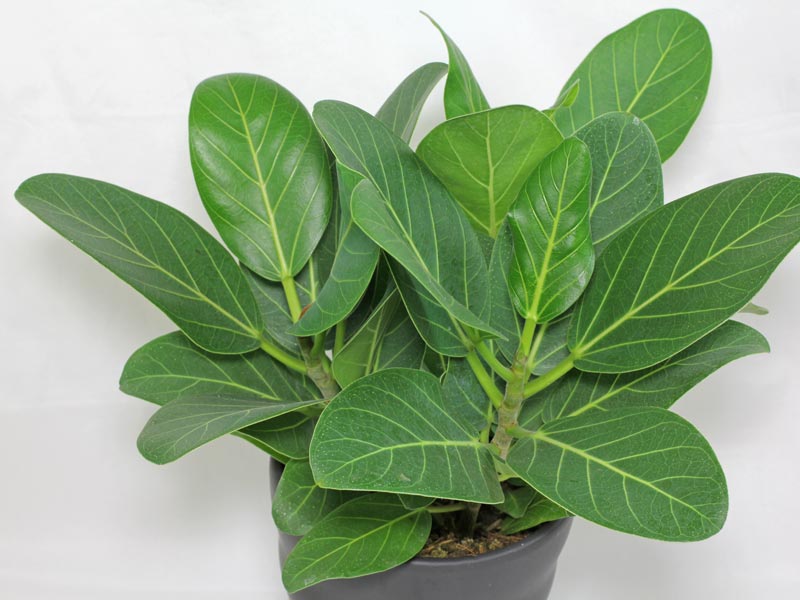
The pot should be selected equal to the diameter of the root system.Down it is necessary to lay a thick drainage layer, and the soil should be purchased ready and mixed with a small amount of charcoal.
It is recommended not to overload Bengal ficus, but to transplant it. To do this, clear all roots of the soil, then look at them for damage. If necessary, deformed roots are removed and wake up with chopped charcoal.
When planting, do not ram the neck of the rhizome into the ground.
Read also:rubber care ficus at home
Ideal conditions for keeping Bengal ficus
This plant is not hassle-free. For a good development and attractive appearance of a tree, a flower grower must offer a lot of effort. It will be necessary to observe the temperature regime, provide suitable lighting, water correctly. But you should start with the choice of capacity for landing.
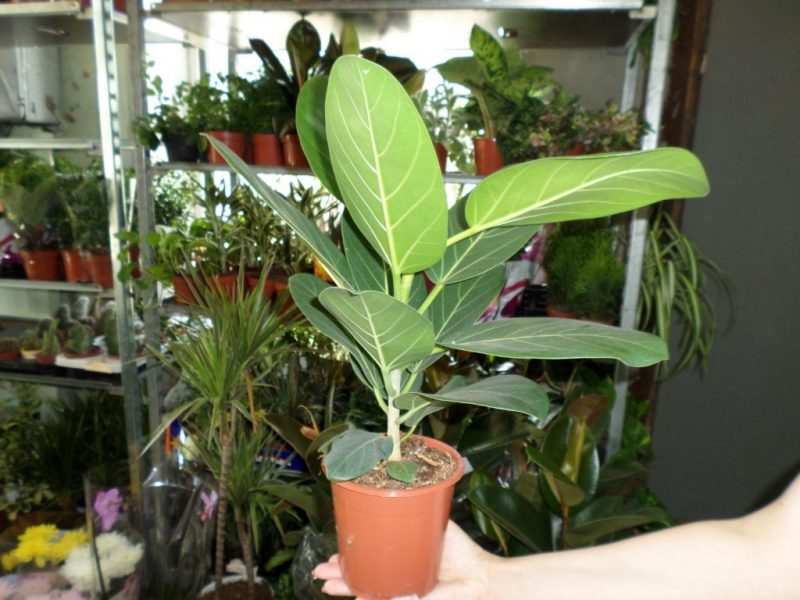
No need to choose a very large pot. If the roots are free, they will develop rapidly, which slows the growth of the plant itself. In addition, in too deep a tank, it is impossible to control watering. The shape of the pot can be any, the main thing is that it contains a layer of drainage and ficus roots.
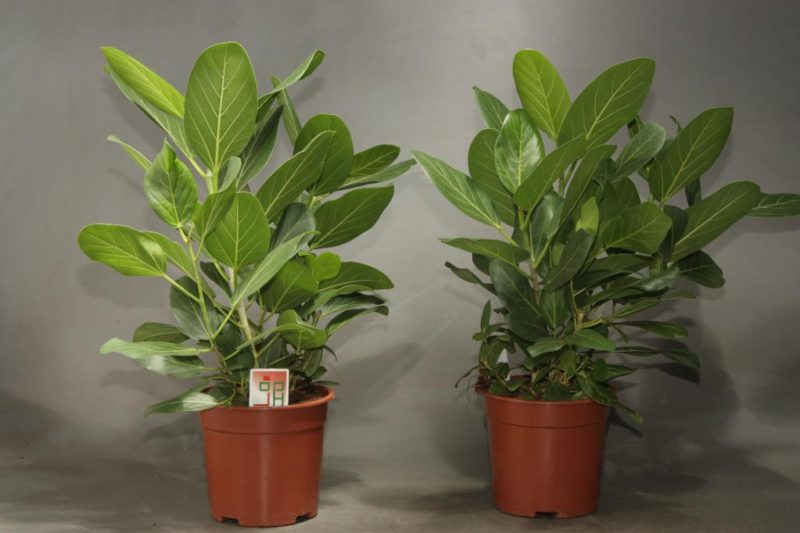
The optimum air temperature is from 17 to 26 degrees. There should be no drafts in the room, also the ficus does not like direct sunlight. However, the room should be well lit, it can be artificial light.
Read also:geranium care
Home Care
For home care for Bengal ficus, it must be properly watered. Do not need abundant watering, as the roots can rot. The soil before adding a new portion of water should be slightly dried, but not cracked from a lack of liquid.
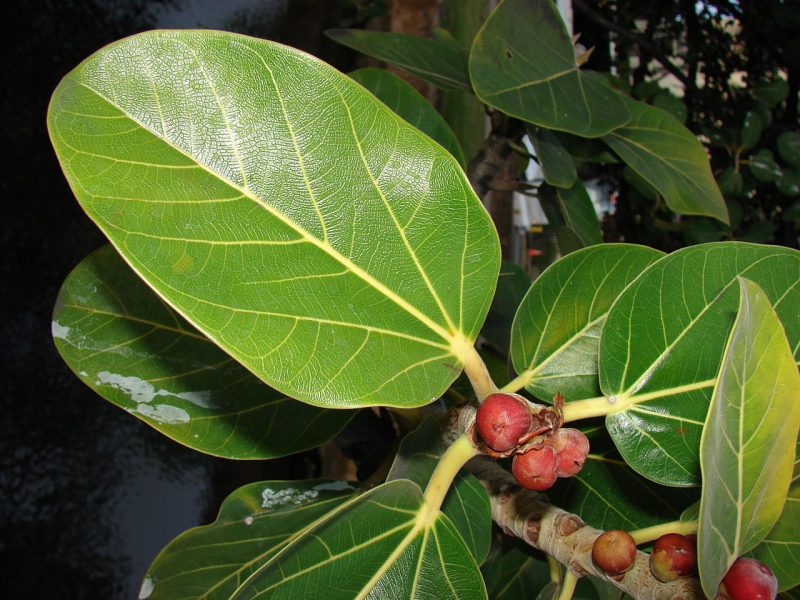
Overflow contributes to the appearance of the fungus, and drought provokes falling leaves and death of the tree.
The plant loves a humid climate, but there is no need to spray it. It will be enough to periodically gently wipe the leaves with a sponge from dust. In winter, you will need to remove the ficus away from any heating systems.
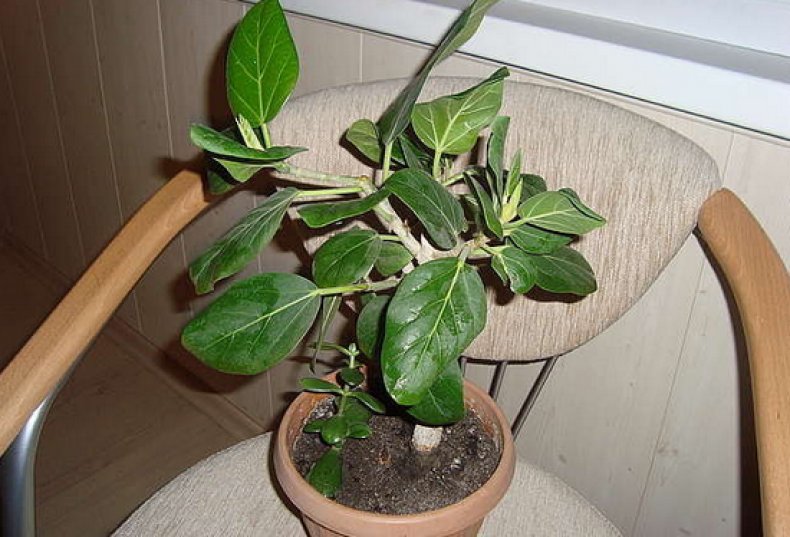
Fertilize the soil from the beginning of spring to the end of autumn using mineral and organic compounds. The solution should be slightly concentrated, for this it must first be diluted with water. Feeding is carried out 1 time in 2 months.
Pruning and crown formation in plants
After some time, you need to trim the ficus. It implies a beautiful crown formation, which is decorative in nature. Cutting of unnecessary branches and leaves is carried out in the spring.

For what purposes is applied:
- increased fouling by shoots in the right place;
- prevention of bare branches;
- a change in the direction of growth of shoots;
- to remove painful and dry areas.
To form a crown should begin with a young plant, since it will be much more difficult to give shape to an adult specimen. An interesting look is the pruning of Bonsai. It allows you to get a miniature copy of a large tree.
Plant propagation methods
The simplest and most common method of propagation of Bengal ficus is apical cuttings. To do this, cut a stalk about 10-15 cm long and place it in a growth stimulator for several hours.
Read also:how to propagate ficus
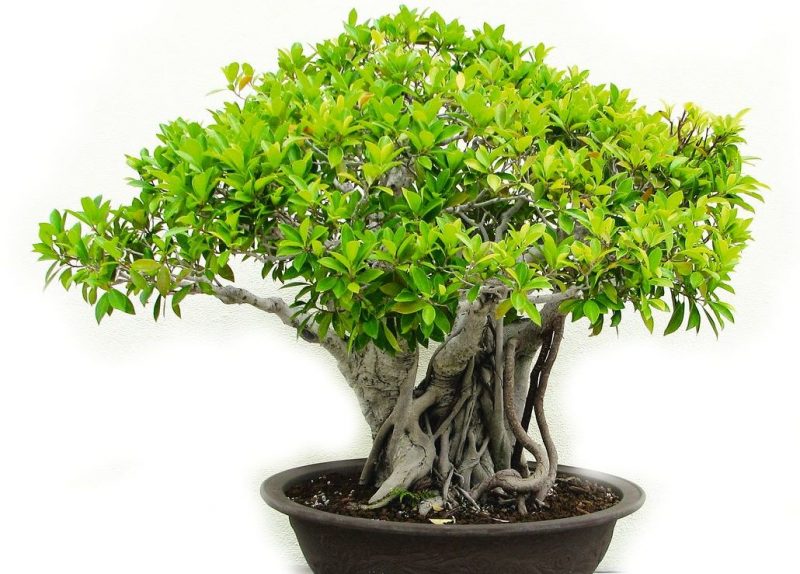
After this procedure, the stalk should be placed in a container of water until the roots appear. The fluid will need to be changed periodically so that the plant does not begin to deteriorate. Next, the stalk should be planted in a small pot with a good layer of drainage from stones or gravel, and water.
Pest and Disease Control
The most common pests for this plant are spider mites, aphids, mealybugs and scale insects. If the soil is waterlogged, there is not enough light, or it is standing in a draft, the foliage begins to turn yellow and fall. Of the diseases, ficus is affected by various fungal deposits, mold.Due to improper care, roots, stems and even leaves can also rot.
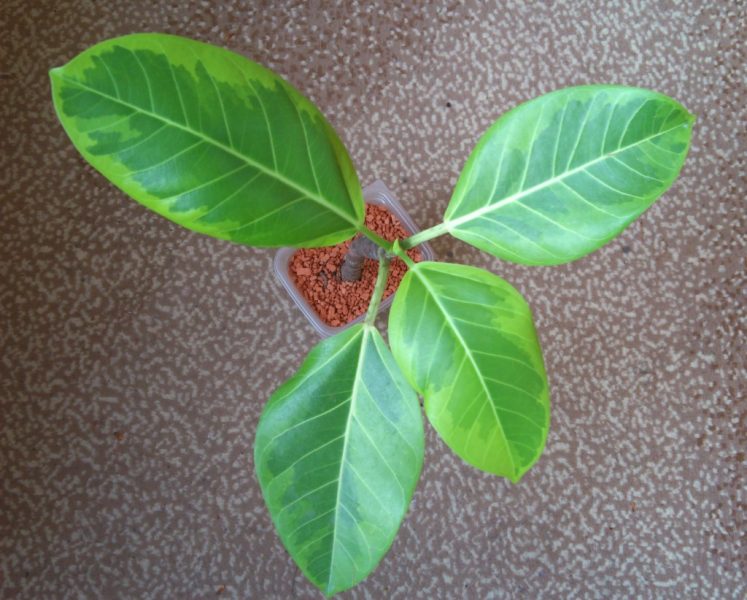
Prevention measures:
- regularly inspect the plant for affected areas;
- control watering;
- quarantine the new ficus for a week after purchasing it;
- once a month, the leaves should be washed with a mild soap solution and a shower of a comfortable temperature, while covering the soil with a film;
- isolate damaged plants until complete recovery;
- every few months, you can treat the soil and leaves with a light solution of manganese.
When insects appear on a tree, it is recommended to conduct a double treatment with an insecticide. If there is mold or rot, you will need to purchase a fungicide and remove all affected areas from the ficus.
What problems can the flower grower face?
Improper care at home for this tree leads to the loss of its decorative properties, and ultimately to death. To avoid this, the grower should regularly inspect the ficus and respond to primary signals of uncomfortable conditions.
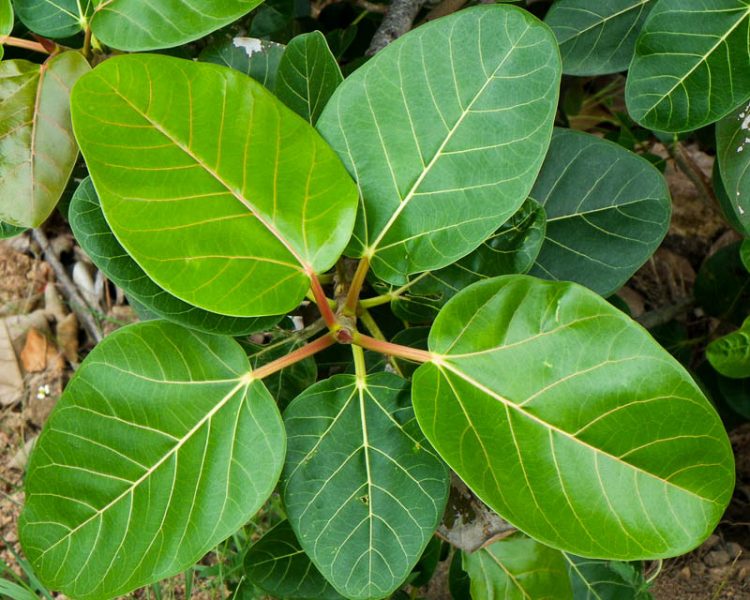
What problems need to be addressed:
- leaves are sluggish and weak - the reason may be that the room is too cold;
- crown turns yellow - not enough moisture, too high air temperature or exposure to direct sunlight;
- the foliage is small - the plant does not have enough light, also the reason may be covered in an improperly sized pot;
- the roots or stems become brown, rot - excess moisture;
- foliage falls - the wrong time for a transplant, uncomfortable conditions, seasonality.
But all these problems are quickly resolved with the right approach to growing Bengal ficus. In addition, such inconvenience is easily forgiven for an interesting plant, which in its appearance resembles a miniature copy of a real large tree.
It is interesting:how to care for ficus
This type of ficus will decorate any minimalist interior, because the greens go well with any muted shades and most bright colors.












